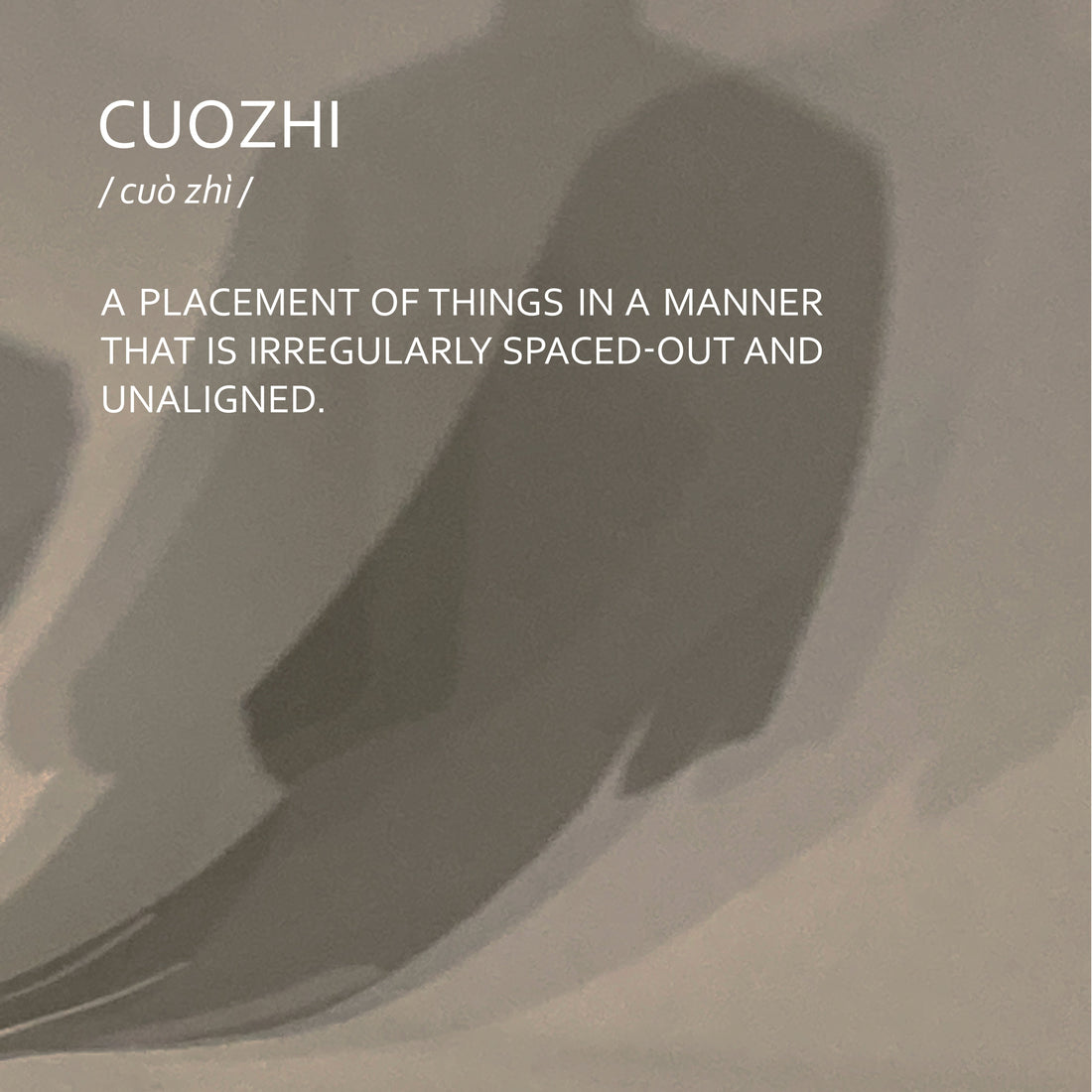
CUOZHI
Share
CUOZHI /cù zhì/ verb, adjective
A placement of things in a manner that is irregularly spaced-out and unaligned.
I.1 intro
Cuozhi (錯置) originates from a Mandarin phrase that is loosely translated as “spacing things out” or “something being misplaced.”
We found ourselves spontaneously fascinated by the phrase in our life and design work, prompting us to begin researching and discussing the essence of the ideology.
Cuozhi is greater than or equal to the sum of the adjectives below: Misplaced Offset random spread scattered Atypical Unaligned mismatched disordered irregular Dislocation heterotopic Asymmetrical peculiar
From the descriptive words above, we can grasp some ideas of Cuozhi.
We are gleaners of innovation, inspiration, humour and fun from the lost of translation.
Cuozhi is our design philosophy, where subtle peculiarity gives birth to distinct characteristics while rigorously maintaining functionality.
I.2 scenery
The world we see, sense and live in is a Cuozhi world. Tangible things, virtual happenings, architectural structures and dynamic movements all coexist and surround us at different levels. It is said that there are always orders within the chaos. Be a mindful observer and admire Cuozhi sceneries in life.
I.3 dive deeper
In a three-dimensional, or even four-dimensional world (if we take the dimension of time into account), Cuozhi, implying "to space things out," is not restricted solely to a physical flat XY surface. It can involve other axes like Z or any timeline.
An easier way to understand Cuozhi is by thinking of the idea of "parallel." Cuozhi is an approach or a feeling where different things, events, and spaces appear simultaneously, not necessarily in harmony.
Here are mediums that reveal or trace a projection or afterimage of Cuozhi:
 A video phone call.
A video phone call.
 A mirror.
A mirror.
 Light and shadow.
Light and shadow.
 Stairs and lifts.
Stairs and lifts.
 Transparent and translucent materials.
Transparent and translucent materials.
 Posters.
Posters.
Cuozhi is like Chanterelle mushrooms, blooming rich in egg yolk yellow among golden autumn leaves. Detecting Cuozhi in life is akin to foraging Chanterelles—scan the surroundings with your heart, and surely you will savour joy for the mind.
Some Cuozhi is easy to notice, some takes more time to chew on for fun.
In the last three images, Cuozhi is the visual pattern of the floor, the wall, and the leaf. However, after some pondering, they are also afterimages of Cuozhi in time. From the varying shading of snow, it represents the different time appearances of the passengers. Posters carry advertisements of events, and within the overlap of the posters, the happenings have been piled up on the wall. Picking up an autumn leaf, you have a handful of seasons all at once.
I.4 the absurd
According to psychology, the human brain works to find logic and patterns to comprehend the surroundings and to function in life.
As Cuozhi literally means “misplaced”, we want to ponder upon the definition of “misplacement”. A "misplaced" feeling is described as "uncomfortable," signifying "not feeling comfortable" or being "out of a comfort zone." When one cannot relate to the reasons and logic of things or feelings in a space or a certain context, a sense of "uncomfortableness," "misplacement," "irritating," "messiness," "error," "stress," and "danger" arises. Your mind naturally seeks to reason for clarity and understanding, allowing the situation to be controlled and achieve a sense of balance and order.
However, interestingly, "humour" is another natural response to "unbalance." Things and events that do not make sense (when one's brain has not connected a clue to the happening) evoke feelings of "awkwardness," "confusion," "funniness," and "amusement.”
Cuozhi or misplaced, though it may sound negative, should be seen as a neutral state describing “a thing not being in a place where it should be.” While it might give an impression of an unpleasant crisis, it also represents a new opening of opportunities—innovation, creativity, fun, and freedom.
